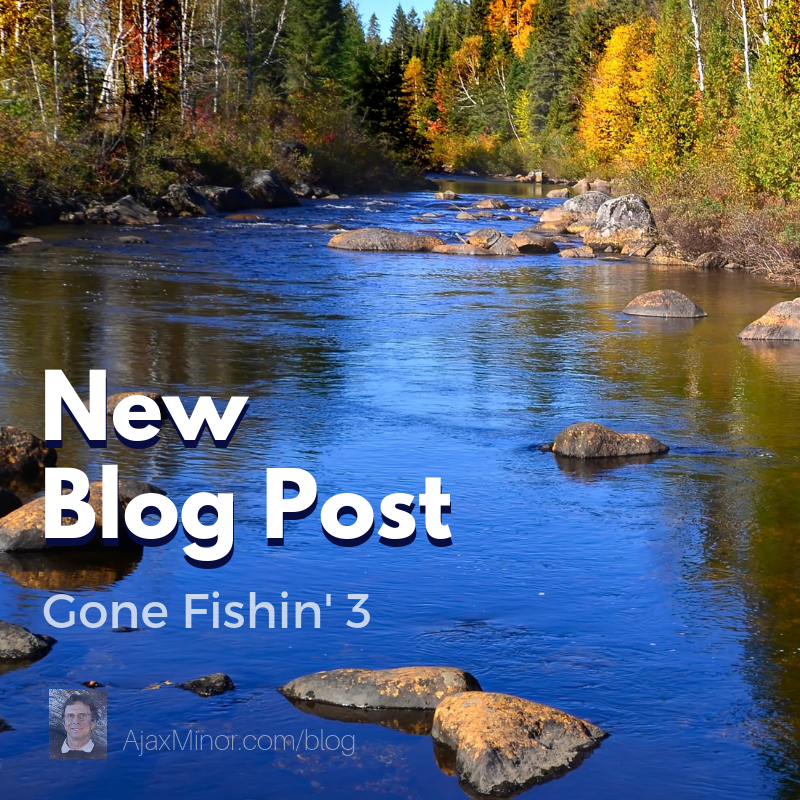I wanted to talk to you this week about the differences in the types of streams where you fish, freestone and spring creeks.
Freestone rivers are fed, in general, by snowmelt and rainwater. Both rely on physics to flow. Freestone rivers and creeks are gravity fed. They are my favorite to fish. All have bottoms that are a mixture of sand and rocks, which can be dislodged and tumble downstream at high water in the spring. They are especially beautiful if you take the time to peer into water and let your eye savor the variety of shapes, sizes and colors of the rocks. It’s also fun to turn a stone over and find it literally crawling with nymphs, which will eventually emerge to become stoneflies, mayflies and a host of other airborne insects that then live a brief life in order to mate and lay their eggs for the next generation.
 Caution is the watchword when wading. Usually your kit includes waders (creative name, huh?), a pair of sturdy boots with soles that can GRIP, a vest for carrying your tackle and a wading staff. The staff is recommended if you are unfamiliar with the river or it is particularly fast and deep. It is no nuisance since it collapses into segments and can be carried in a holster. Another benefit is that the holster is secured to a belt that wraps around your waist. This will keep the water out of your waders if you happen to go down.
Caution is the watchword when wading. Usually your kit includes waders (creative name, huh?), a pair of sturdy boots with soles that can GRIP, a vest for carrying your tackle and a wading staff. The staff is recommended if you are unfamiliar with the river or it is particularly fast and deep. It is no nuisance since it collapses into segments and can be carried in a holster. Another benefit is that the holster is secured to a belt that wraps around your waist. This will keep the water out of your waders if you happen to go down.
Old fashioned waders were rubber and very heavy. If you fell and they filled up you could drown. Not only novices are at risk, but seasoned angles and even guides have been killed in a plunge, as happened many years ago to a famous guide on the Madison. Know your water, know what to expect or take a local guide if the water is unfamiliar.
So much for the dangers. What about the pleasures? We’ve already spoken of the colorful stone bottoms. But the sound of a river flowing is soothing. And fishing requires so much concentration that the calming ‘white noise’ of the river coursing can help block out everything but your attention to your fly.
And you MUST always keep your focus on the fly, whether dry or an indicator fly to which your nymph is attached. A few seconds of distraction and you might miss your fish.
Always be on the lookout for pools and eddies, where the current slows noticeably. This is where the big guys like to ‘hold’. They don’t have to expend as much energy feeding. But avoid ‘frog water’ where the water simply sits. However, faster water can also hold big fish, particularly along ‘seams’ where a swift current and a slower one run side by side.
Another side benefit of freestone fishing is the hiking you have to do to get from one pool to another. You can relax and let your focus wander to the plant and animal life around you.
Spring creeks are a different experience. They are formed when underground water sources well up. They are much slower moving and usually have a pretty constant water temperature year round. So they are reliable and easier to wade. Why fish freestone then? Well, since spring creeks move at a slower velocity they tend to be pretty glassy at the surface, allowing the fish to keep a close bead on predators, including anglers. If you can see the fish chances are it can see you! You must move slowly and deliberately. But the slower current and the availability of oxygenated water provide an ideal habitat for plant life which begets the insects that feed your prey. So fishing in spring creeks, like the Gold Medal water of Silver Creek south of Sun Valley, can be tranquil, rewarding and also frustrating at times when you scare off a big Rainbow or Brownie.
And don’t dismiss small creeks and the feeder streams for the bigger rivers. Simply take lighter tackle (short rods shooting lighter line) and hop in. They’re great for casting practice, as you have less room to throw and must be more accurate.
Next week we’ll talk about flies. The aristocratic ‘dry’ and the more humble ‘nymph’.